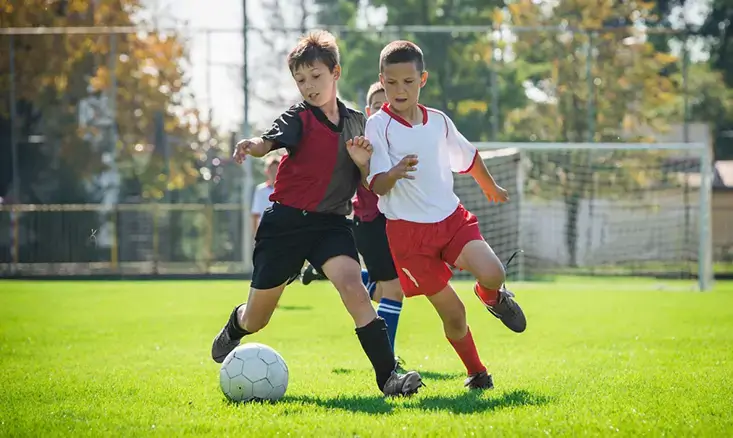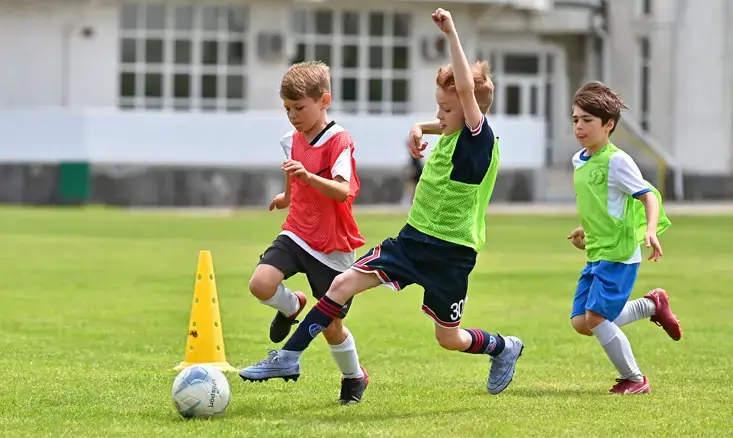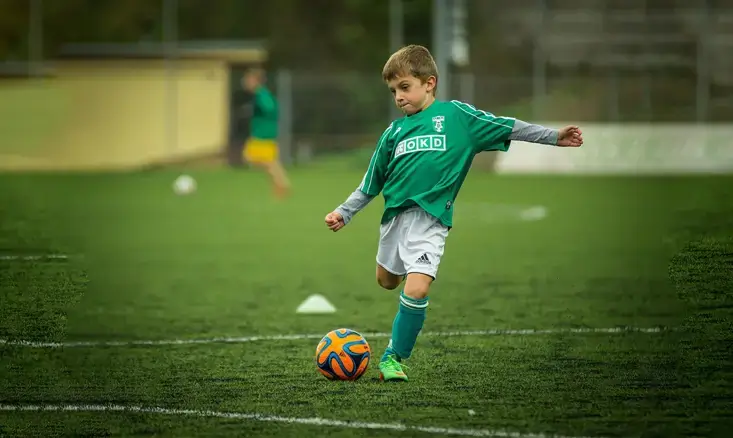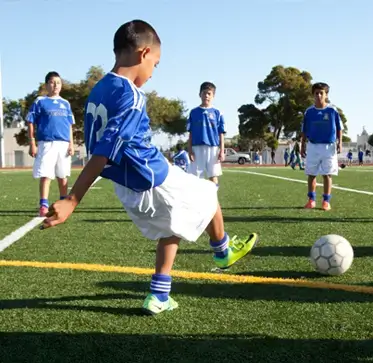CRFC BLOGS
LATEST BLOGS & NEWSLETTERS
Mastering Youth Soccer One-on-One Drills
One of the most important parts of youth soccer training is teaching players how to handle one-on-one situations. These drills help players develop essential skills like dribbling, attacking, and defending. Mastering Youth soccer one-on-one drills helps build confidence, quick decision-making, and agility, all of which are necessary for success on the field. In this article, we’ll explore different types of Youth soccer one-on-one training, break down the best drills, and show how to adapt them for different age groups.
Why One-on-One Drills Are Essential for Youth Soccer
One-on-one soccer drills like other youth soccer drills help young players develop critical individual skills. Whether dribbling past an opponent, defending against an attacker, or making quick decisions in tight spaces, Youth soccer one-on-one drills simulate the challenges players face during actual matches.
Encouraging Decision-Making and Creativity
In every one-on-one soccer drill, players are forced to make decisions quickly. Should they pass, dribble, or try to shoot? This fast-paced thinking encourages creativity as players look for new ways to outmaneuver their opponents. By practicing youth soccer one-on-one moves during training, young players become more comfortable with trying new techniques and taking calculated risks, which makes them better on the field.
Building Defensive and Attacking Skills
Youth soccer 1v1 drills aren’t just about attacking—they’re also perfect for teaching defense. On offense, players learn how to dribble with control, change direction, and beat defenders. On defense, they practice staying between their opponent and the goal, timing their tackles, and applying pressure without committing too soon.
Age-Appropriate Competitiveness and Fun
The great thing about Youth soccer one-on-one drills is that they can be adapted to fit any age group, from 6-year-olds just learning the basics to 10-year-olds who need more advanced challenges. For younger kids, the drills are simple and fun and focused on learning skills like dribbling and ball control. For older kids, the drills become more competitive and include more complex techniques. This balance of fun and challenge keeps players engaged and excited to learn.

The Best Youth Soccer One-on-One Drills for Different Age Groups
Youth soccer 1-on-1 drills are highly flexible and can be adjusted to suit the age and ability of the players. Let’s explore a few drills that work well for younger and older kids.
One-on-One Soccer Drills for 6-Year-Olds
-
Drill: Mini 1v1 Game
-
Setup
Two small goals are placed at opposite ends of the field. One player is the attacker, and the other is the defender.
-
Objective
The attacker tries to dribble past the defender and score a goal. The defender must try to block them and win the ball.
-
Focus
This drill focuses on dribbling, positioning, and introducing the idea of defending to young players.
-
One-on-One Soccer Drills for 8-Year-Olds
-
Drill: 1v1 Through Gates
-
Setup
Two cones are set up to create a “gate.” One player is the attacker, and the other is the defender.
-
Objective
The attacker must dribble through the gate while the defender blocks them. If the defender wins the ball, they can switch roles.
-
Focus
This drill helps improve dribbling in tight spaces and defending skills by teaching players to block their opponents effectively.
-
One-on-One Soccer Drills for 10-Year-Olds
-
Drill: 1v1 Four Corners
-
Setup
Four small goals are positioned at each corner of the field. The players take turns attacking and defending.
-
Objective
The attacker tries to score in any of the four corner goals, while the defender attempts to block them and win the ball.
-
Focus
This drill encourages quick changes in direction, creativity, and defensive awareness. It helps players think strategically about how to beat their opponent.
-
Youth Soccer One-on-One Training Moves
-
Change of Direction Moves
One of the most effective techniques in one-on-one situations is the ability to change direction quickly. Moves like the Step-Over and Go or the Drag Back are essential for players to get past defenders. These moves teach players how to shift their body weight to trick defenders into thinking they’re going one way, then quickly move in the opposite direction.
-
Speed and Control in One-on-One Situations
Speed and ball control are critical in youth soccer one-on-one moves. After a successful feint or change of direction, players must quickly accelerate to take advantage of the space they’ve created. Practicing these moves regularly during youth soccer one-on-one training will help young players become more confident and agile on the field.

One-on-One Defending Youth Soccer Drills
Key Defending Principles for Youth Soccer
When teaching defending skills, coaches should focus on a few fundamental principles:-
Positioning
Defenders should always stay between their opponent and the goal, forcing the attacker to make difficult decisions.
-
Timing
The defender should learn to time their tackles carefully, waiting for the perfect moment to win the ball.
-
Focus
Defenders need to keep their eyes on the ball rather than watching the player. This helps them react quickly and avoid being tricked by body feints or fakes.
Best One-on-One Youth Soccer Drills for Defenders
-
Drill: Shadow Defending
-
Setup
Player A is the attacker, and Player B is the defender. Player A dribbles the ball while Player B stays close, shadowing their movements.
-
Objective
The defender must stay between the attacker and the goal without attempting to steal the ball. This teaches them how to properly position and control the attacker’s movement.
-
-
Drill: 1v1 Pressure and Tackle
-
Setup
The attacker tries to dribble past the defender while the defender applies pressure and attempts to time their tackle.
-
Focus
This drill teaches defenders to apply pressure and time their tackles effectively without diving in too early and allowing the attacker to get past them.
-
Best Practices for Effective Youth Soccer One-on-One Training
-
Maximize 1v1 Training Sessions
The key to effective youth soccer one-on-one drills is consistency and repetition. Players need to practice these drills regularly to develop their skills. Coaches should also provide plenty of feedback, both positive and constructive, to help players improve.
-
Building Confidence Through Positive Feedback
Building players’ confidence by giving them positive feedback when they succeed is important. Whether they win a one-on-one challenge or make a great defensive play, praise helps boost players’ confidence.
-
Keeping Drills Fun and Challenging
Even though youth soccer one-on-one drills are competitive, they should always be fun. Adding small competitions, like keeping track of how many times each player successfully dribbles past their opponent, keeps players engaged and motivated.
-
Balancing Attacking and Defending in Drills
A well-rounded training session should include both attacking and defending drills. By practicing both sides of the game, players become more complete and versatile on the field.
Common Mistakes to Avoid in One-on-One Youth Soccer Training
-
Overcomplicating Drills
For younger players, keep the drills simple. Don’t try to introduce too many concepts at once.
-
Focusing Only on the Offense
Don’t neglect defense! Both attacking and defending are important in one-on-one drills.

Conclusion
Youth soccer one-on-one drills are one of the best ways to help young players develop the skills they need to succeed on the field. Whether it’s learning how to dribble past a defender, make an intelligent tackle, or change direction quickly, these drills build confidence and help players become well-rounded athletes. With consistent practice and a focus on attacking and defending, young players can master the art of Youth soccer one-on-one training and become stronger, smarter players.
FAQs
What are the best one-on-one soccer drills for young kids?
The best drills for young kids include the Mini 1v1 Game and 1v1 Through Gates. These drills focus on dribbling and positioning while being fun and competitive.
At what age should kids start practicing one-on-one drills?
Kids as young as 6 can start practicing Youth soccer one-on-one drills. These drills should focus on simple skills like dribbling and controlling the ball.
How do you teach defending in youth soccer one-on-one drills?
Defending can be taught using drills like Shadow Defending, where players focus on positioning and Pressure and Tackle, where they learn to time their tackles correctly.
What are the key benefits of one-on-one soccer drills?
One-on-one soccer drills help players improve dribbling, defending, quick decision-making, and confidence in game situations.
How can I make one-on-one soccer drills fun for my kids?
You can make drills fun by adding competitions, such as awarding points for successful dribbles or defensive stops, and keeping the drills dynamic and engaging.

Did you find this useful?


